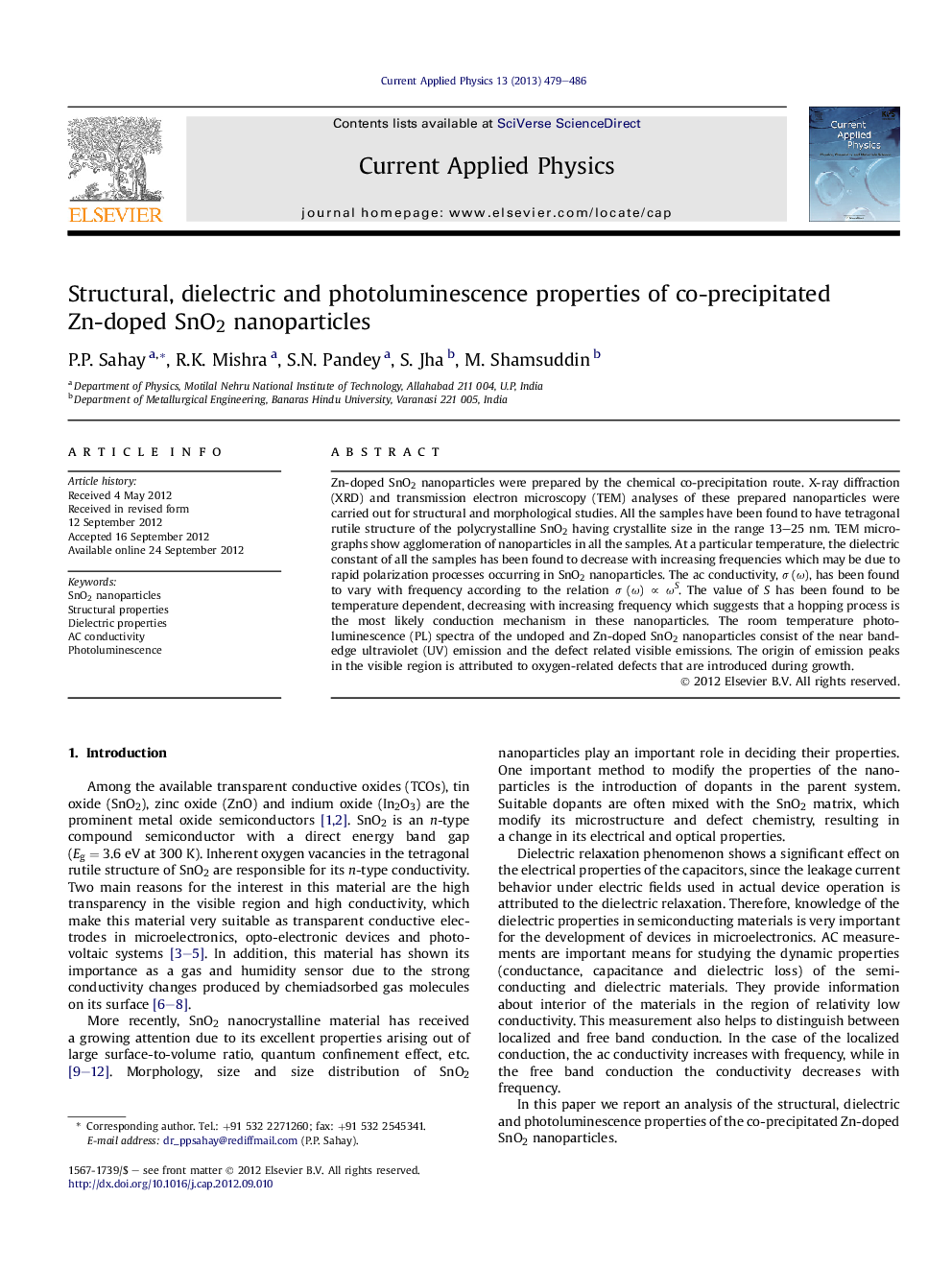| Article ID | Journal | Published Year | Pages | File Type |
|---|---|---|---|---|
| 1787635 | Current Applied Physics | 2013 | 8 Pages |
Zn-doped SnO2 nanoparticles were prepared by the chemical co-precipitation route. X-ray diffraction (XRD) and transmission electron microscopy (TEM) analyses of these prepared nanoparticles were carried out for structural and morphological studies. All the samples have been found to have tetragonal rutile structure of the polycrystalline SnO2 having crystallite size in the range 13–25 nm. TEM micrographs show agglomeration of nanoparticles in all the samples. At a particular temperature, the dielectric constant of all the samples has been found to decrease with increasing frequencies which may be due to rapid polarization processes occurring in SnO2 nanoparticles. The ac conductivity, σ (ω), has been found to vary with frequency according to the relation σ (ω) ∝ ωS. The value of S has been found to be temperature dependent, decreasing with increasing frequency which suggests that a hopping process is the most likely conduction mechanism in these nanoparticles. The room temperature photoluminescence (PL) spectra of the undoped and Zn-doped SnO2 nanoparticles consist of the near band-edge ultraviolet (UV) emission and the defect related visible emissions. The origin of emission peaks in the visible region is attributed to oxygen-related defects that are introduced during growth.
► Zn-doped SnO2 nanoparticles were prepared by the chemical co-precipitation route. ► All samples exhibit tetragonal rutile structure having crystallite size 13–25 nm. ► Dielectric constant is maximum for 1 at% Zn-doped sample at 360 K and low frequency. ► Frequency dependence of ac conductivity obeys the power law: σ ∝ ωS, S ≤ 1. ► PL spectra show near-band edge UV emission and defect related visible emissions.
